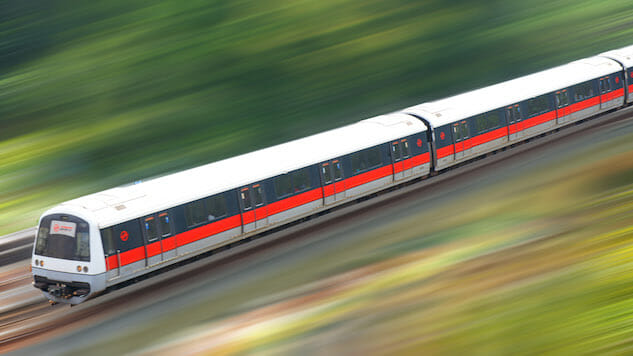EarthRx: How the Great Train Comeback Will End the Fossil Fuel Industry

“There’s something about the sound of a train that’s very romantic and nostalgic and hopeful.” – Paul Simon
I have always loved riding the rails. It’s simply the most elegant and relaxing way to get around and it makes the journey itself as important as just getting from point A to point B. Trains are also extremely environmentally efficient because they can transport large numbers of people or huge shipments of cargo with a single engine, thereby using a fraction of the energy used by any other means. This rare mix of being both a super green technology and an inspirational experience makes train travel a standout component when it comes to designing a sustainable model for human life on earth.
In fact, for those of us concerned about carbon emissions and fossil fuel consumption, especially now that the Grinch just backed out of the nearly globally accepted Paris Agreement, working toward rail networks at the local level is probably the strongest environmental move we can make. The truth is that trains could take out the petroleum industry single-handedly with or without the Paris Agreement, and they are already leaving the station en masse to do so.
Germany for example just unveiled a zero-emission hydrogen powered train that emits only steam and is already slated for 14 lines. These trains are set to replace the diesel run trains that the country currently uses and other European nations like Denmark, Norway and the Netherlands are already placing their orders for this super lean and clean beauty.
Over in the Persian Gulf, Elon Musk’s 500mph Hyperloop train that transforms a two-hour drive between Dubai and Abu Dhabi into a mere 12-minute jaunt is being tested as this article goes to print. While that is scary fast, this single train could make the estimated 4,000 single vehicles that travel that route daily nearly obsolete.
On the epic tip, China just launched direct freight train service from the city of Yiwa all the way to London, a journey of more than 7,000 miles that crosses nine countries. This just a part of the “New Silk Road” train network that is putting rails on ancient trade routes that have existed for thousands of years.
Even right here in the belly of the beast, California just sold more than $1 billion in taxable bonds to start construction on the first publicly financed high-speed rail system in the United States. The magic here is that the Golden State went ahead and found a way to make this light rail, which will connect the San Francisco Bay Area with Los Angeles and drastically cut down highway traffic and car pollution, happened despite the fact that President Grinch tried to block it by killing federal grants for it just months after he smirked his way into the oval office.
While some might criticize government-funded rail systems as “welfare,” that simply ignores both history and reality. First of all, not only is the entire fossil fuel industry subsidized to the tune of more than $35 billion annually in the U.S. but the upkeep of highways and the mitigation of pollution by cars and freight bearing trucks is almost too high to calculate—yet it is all borne by the public.
Secondly, the entire automotive infrastructure was created by public funds and corrupt corporations in the first place. Trains had to be purposefully suppressed for cars to take over.
 Photo courtsey of Orange County Archives/Flickr CC BY 2.0
Photo courtsey of Orange County Archives/Flickr CC BY 2.0
In fact, the United States had the largest rail network in the world up until after World War II and it only really went into a tailspin when President Dwight D. Eisenhower funded the Interstate Highway System in 1956. At the same time, General Motors purchased the electric streetcar lines in dozens of cities across America, tearing up the tracks to make way for more cars in an act that brought them a federal antitrust conviction and the blame for completely changing the destiny of mega-metropolises like Los Angeles, which at the time had the largest trolley system in the world. It was in the decades that followed this that La-La land became the poster child for endless sprawl, nightmarish commutes and ubiquitous smog.
-

-

-

-

-

-

-

-

-

-

-

-

-

-

-

-

-

-

-

-

-

-

-

-

-

-

-

-

-

-

-

-

-

-

-

-

-

-

-

-








































